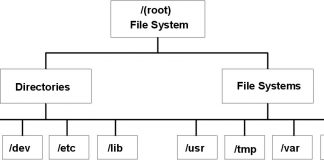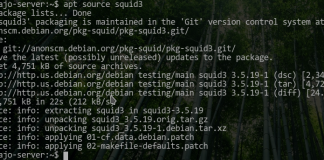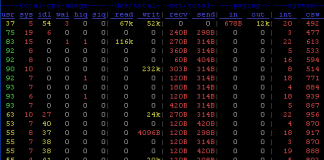Let’s Encrypt your Apache webserver on CentOS 7
Introduction
It was September when, with a post on its blog, Google announced that starting from Chrome 56, its browser will mark non-secure pages containing...
How to sync files with lsyncd
Introduction
We've already talked about using tools like rsync for managing backup of your systems, but there's another "problem" which has to be solved if...
Mount remote directories with SSHFS
Introduction
For those who don't know, SSHFS stands for Secure SHell FileSystem. It's a client that enables us to interact with remote directories through SFTP...
How to install Munin on RHEL/CentOS/Fedora
Introduction
Munin is a networked resource monitoring tool that can help analyze resource trends. It has an architecture master/node, built for modularity and plug and...
Install Redmine 3 on CentOS 7 with Nginx as web server
Introduction
Redmine is a web application for project management, written entirely using Ruby on Rails, and released under the terms of GPLv2.
Some of its features...
How to install and configure Nextcloud on Ubuntu 16.04 with Apache
Introduction
Nextcloud is a cloud storage service invented by ownCloud founder. Unlike other popular services, in this case you can set up your own storage...
How to install and configure Piwik on Ubuntu Server 16.04
Web analytics - a general overview
Those who own a website probably know what "web analytics" refers to. It's a general term indicating the study...
How to generate and check strong passwords in Linux
Introduction
Different operations require different security layers. Accessing your email account, your social media, your bank account, and a remote server that you administer through...
Backup with Percona XtraBackup on Ubuntu 16.04
Introduction
Percona XtraBackup is an open source backup utility for MySQL-based servers that doesn't lock your database while performing backup. Using it provides the following...
How to install LDAP on CentOS 7
Introduction
LDAP stands for Lightweight Directory Access Protocol and, as the name suggests, it's a standard protocol for accessing and maintaining distributed directory information services...
How to install Gitlab on Debian 8
What is Gitlab?
As stated in official website, "GitLab is an application to code, test, and deploy code together. It provides Git repository management with...
How to prevent SSH from disconnecting sessions
Introduction
If you work with SSH, you already know that, after few minutes of inactivity, a session would be closed automatically, for security reasons. In...
Upgrading from Fedora 24 to Fedora 25
Introduction
We already talked about the release of Fedora 25, and the improvements it brings. In this article, we will see how to upgrade from...
Remove duplicate files with fdupes
Introduction
Sometimes we all need to find some duplicate file in our system; this is a very tedious task, expecially if we have to do...
Upgrading to PostgreSQL 9.5 in Fedora 24
What's new in PostgreSQL 9.5
PostgreSQL is the world's leading open source database; in its 9.5 version there are a lot of enhancements, here reported...
How to configure rsnapshot for local backup
Introduction
We already talked about the usage of rsync to make (and restore) a backup. Today, we'll go further, talking about a tool built upon...
APT: Rebuilding Package in Debian
Package rebuilding is something easily done in Debian. As SysAdmin, you might find yourself in a spot needed to rebuild a Package, maybe to...
Executing MySQL Queries Directly From the Command Line
If you are a System Administrator, it will get to some point you only want to run a one line MySQL command. Maybe in...























